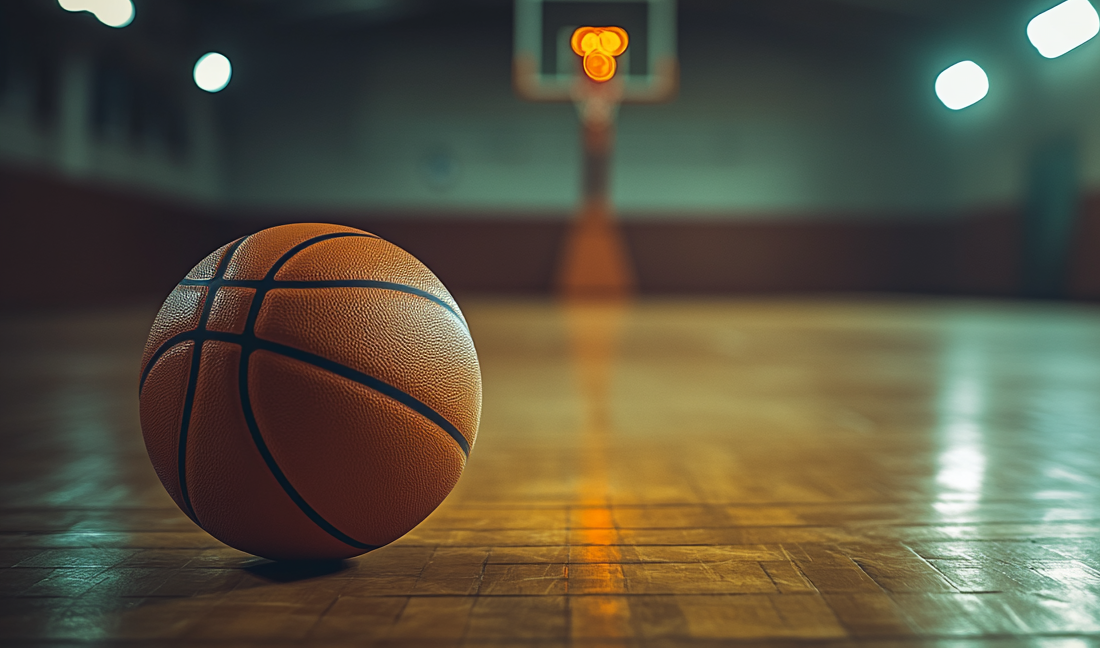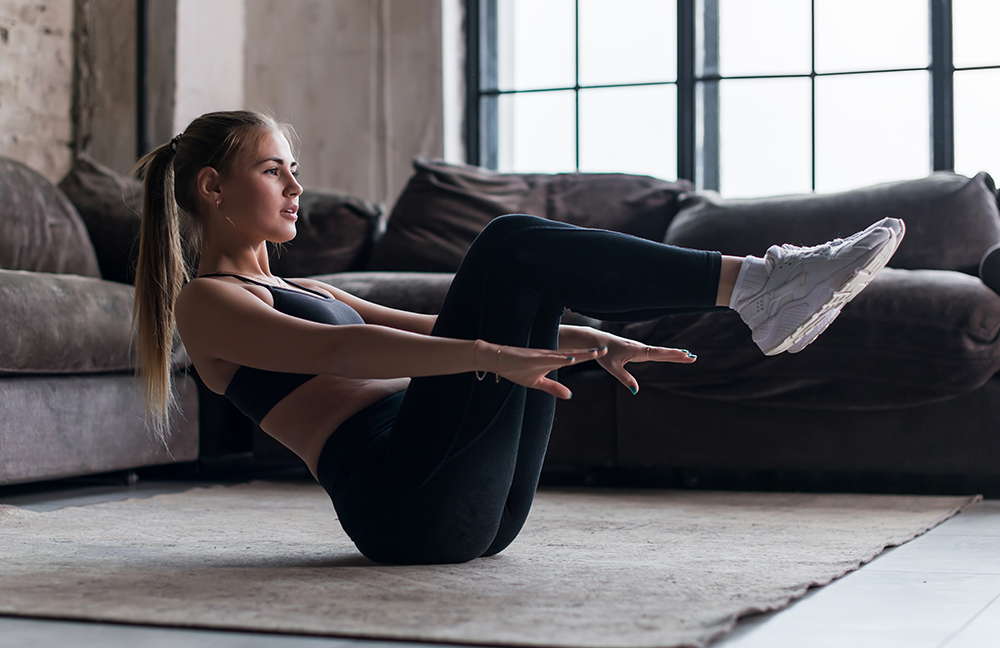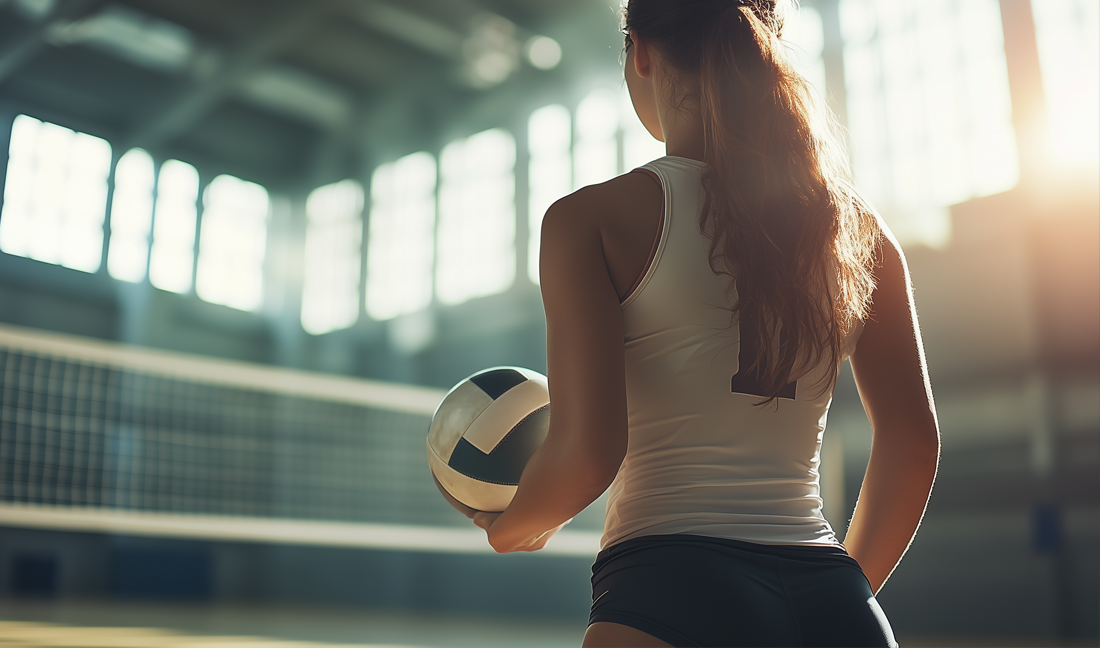Introduction
Basketball is a sport that demands speed, power, agility, and endurance. While many athletes focus on their skills with the ball, incorporating a basketball strength training workout into your routine is essential for elevating on-court performance. It’s not just about scoring points or perfecting your jump shot; it’s about building a body that’s strong, explosive, and resilient to the game’s physical demands.
For basketball players, weightlifting offers a pathway to improved vertical jumps, quicker sprints, and better overall strength for defense and rebounding. It’s a common misconception that lifting weights will make players bulky or slow. In reality, when done correctly, strength training enhances performance without sacrificing agility. From increasing explosiveness to reducing injury risks, weightlifting is a game-changer for athletes looking to reach their full potential.
This article dives into the principles of weightlifting tailored specifically for basketball players. You’ll learn why strength training is essential, discover key exercises to incorporate into your routine, and explore how a basketball-focused strength training program can give you an edge on the court. Whether you’re a point guard, shooting guard, or center, these insights will help you build the strength and power needed to dominate the game.
1. Why Basketball Players Need Weightlifting
A well-rounded basketball strength training workout is critical for athletes who want to perform at their best. The physical demands of basketball – sprinting up and down the court, jumping for rebounds, and defending against opponents – require explosive power, endurance, and resilience. Weightlifting provides the foundation to meet these challenges head-on while reducing the risk of injuries.
Explosive Power for Jumps and Sprints
Basketball players rely heavily on their ability to generate explosive power for movements like vertical jumps, quick cuts, and fast breaks. Weightlifting focuses on strengthening the lower body, which is essential for developing this power. Exercises like squats, deadlifts, and Bulgarian split squats target key muscles such as the quadriceps, hamstrings, and glutes, enabling players to jump higher and sprint faster.
Core Stability for Balance and Control
Core strength is the secret weapon of elite basketball players. A strong core enhances stability, making it easier to stay in control during dynamic movements like pivoting, shooting, and driving to the hoop. Weightlifting exercises such as planks, Pallof presses, and medicine ball slams build a rock-solid core that improves balance and reduces the risk of injury during high-intensity plays.

Upper-Body Strength for Rebounding and Defense
In basketball, upper-body strength is often underestimated, but it’s crucial for winning physical battles on the court. Whether it’s boxing out opponents for a rebound or maintaining position on defense, a strong upper body provides the edge. Bench presses, dumbbell rows, and overhead presses develop the chest, shoulders, and back muscles needed to outmuscle opponents and maintain dominance in the paint.
Injury Prevention
Basketball is a high-impact sport, with frequent jumping, sudden stops, and quick changes of direction. These movements can strain the knees, ankles, and lower back if the body isn’t adequately prepared. Weightlifting strengthens not only the muscles but also the tendons and ligaments, reducing the likelihood of injuries. Movements like Romanian deadlifts and single-leg exercises improve joint stability and ensure the body can handle the demands of the game.
Long-Term Athletic Development
For young basketball players, incorporating weightlifting early in their training helps establish a foundation of strength and power that pays dividends throughout their athletic careers. It’s not just about immediate performance; it’s about building a body that can sustain years of intense play without breaking down.
Key Takeaway
Weightlifting is not just an optional part of a basketball player’s training – it’s a necessity. A well-designed basketball strength training workout improves explosive power, balance, and overall strength while safeguarding against injuries. By integrating strength training into your routine, you’ll not only perform better on the court but also ensure longevity in the game. Let’s explore how to structure this type of workout to maximize results.
2. Key Principles of a Basketball Strength Training Workout
A successful basketball strength training workout goes beyond simply lifting weights – it’s about tailoring your training to meet the specific demands of the game. To build strength, power, and agility without sacrificing speed or mobility, you need to follow a few key principles.
Focus on Explosiveness, Not Bulk
Basketball players need lean, powerful muscles that can generate quick bursts of energy. Unlike bodybuilding, where the goal is to build mass, basketball strength training emphasizes explosive power. Incorporate compound lifts like squats and deadlifts, and pair them with dynamic exercises like box jumps and kettlebell swings to enhance your speed and vertical jump.
Train for Balance and Stability
Basketball is a dynamic sport that requires constant changes in direction, balance while moving, and stability in the air. A strong lower body and core are crucial for maintaining control during these movements. Incorporate single-leg exercises like Bulgarian split squats and stability-focused moves like Pallof presses to develop the balance and coordination needed on the court.
Include Mobility and Flexibility Work
Strength is only effective if you can use it through a full range of motion. Mobility and flexibility are essential for reducing the risk of injury and improving performance. Incorporate dynamic stretches, yoga-inspired movements, and foam rolling into your routine to ensure your muscles stay flexible and responsive.
Prioritize Functional Movements
Basketball requires functional strength – movements that translate directly to the game. Focus on exercises that mimic on-court actions, such as lunges for lateral movement, plyometric drills for jumping, and rotational exercises for passing and shooting strength. These functional moves ensure your training directly improves your game-day performance.
Train the Entire Body
Basketball is a full-body sport, so your strength training program should target all major muscle groups. Here’s how to break it down:
- Lower Body: Squats, deadlifts, and lunges for explosive leg power.
- Upper Body: Pull-ups, bench presses, and overhead presses for shooting, rebounding, and defensive strength.
- Core: Planks, Russian twists, and hanging leg raises for balance and control.
Use Progressive Overload
To continue improving, your muscles need to be challenged regularly. Gradually increase the weight, reps, or intensity of your workouts to build strength over time. Keep track of your progress and adjust your program as you grow stronger. Learn all about progressive overload in this article.
Combine Strength Training with Basketball Skills
Strength training is most effective when paired with regular basketball practice. After lifting, spend time working on your shooting, dribbling, and agility drills to ensure your strength translates into better on-court performance.

3. Basketball-Specific Strength Training Workout Plan
Now that you understand the principles of a basketball strength training workout, it’s time to put them into action. Below is a week-long plan designed to enhance explosive power, strength, and agility while maintaining balance and mobility. This plan targets all the major muscle groups basketball players rely on to perform at their best.
Weekly Training Schedule
🏀Day 1: Lower Body Power
| Exercise | Sets / Reps | Why |
|---|---|---|
Back Squats | 4 sets of 6-8 reps. | Focus on explosiveness when driving up from the squat position. |
Romanian Deadlifts | 4 sets of 8-10 reps. | Strengthens the hamstrings and glutes, reducing injury risk. |
Bulgarian Split Squats | 3 sets of 10 reps per leg. | Improves single-leg strength and balance for quick direction changes. |
Calf Raises | 4 sets of 15-20 reps. | Enhances ankle stability and jump height. |
Box Jumps | 4 sets of 12 reps. | Develops explosive jumping power. |
🏀Day 2: Upper Body Strength
| Exercise | Sets / Reps | Why |
|---|---|---|
Bench Press (Barbell or Dumbbells) | 4 sets of 6-8 reps. | Builds chest and triceps strength for shooting and rebounding. |
Pull-Ups or Lat Pulldowns | 3 sets of 10-12 reps. | Strengthens the back and biceps for defensive plays and overall upper-body balance. |
Overhead Dumbbell Press | 3 sets of 10 reps. | Targets shoulder strength and stability. |
Dumbbell Rows | 3 sets of 10 reps per arm. | Improves back strength and posture, essential for rebounding and passing. |
Medicine Ball Slams | 3 sets of 15 reps. | Adds rotational strength and explosiveness. |
🏀Day 3: Active Recovery and Mobility
- Dynamic Stretching Routine: 10-15 minutes. Include hip openers, arm swings, and leg swings.
- Yoga or Foam Rolling Session: 20-30 minutes. Focus on flexibility and releasing tight muscles.
- Light Activity: Go for a walk or play a non-intensive game of basketball.
🏀Day 4: Full-Body Explosiveness
| Exercise | Sets / Reps | Why |
|---|---|---|
Power Cleans | 3 sets of 6-8 reps. | Develops total-body power and coordination. |
Kettlebell Swings | 3 sets of 10 reps. | Targets the posterior chain and improves explosiveness. |
Lunges with Pass-Through | 3 sets of 12 reps per leg. | Builds strength and rotational stability for dynamic movements. |
Plank with Arm Lift | 3 sets of 20 taps. | Strengthens the core and shoulders for stability and balance. |
Knee Tuck Jumps | 4 sets of 10 reps. | Improves horizontal explosiveness for sprinting and diving plays. |
🏀Day 5: Core and Stability
| Exercise | Sets / Reps | Why |
|---|---|---|
Hanging Leg Raises | 4 sets of 10-12 reps. | Strengthens the lower abs and hip flexors. |
Russian Twists | 3 sets of 20 twists (10 per side). | Enhances rotational power for passing and shooting. |
Pallof Press | 3 sets of 12 reps per side. | Improves core stability and resistance to rotational forces. |
Stability Ball Rollouts | 3 sets of 15 reps. | Strengthens the core and improves control for on-court movements. |
Side Plank with Reach-Throughs | 3 sets of 10 reps per side. | Targets obliques and improves lateral stability. |
🏀Day 6: Optional Conditioning
- Jump Rope: 5 rounds of 2 minutes with 1-minute rest. Boosts cardio and foot speed.
- Agility Ladder Drills: 15 minutes. Improves footwork and coordination for quick cuts.
- Short Sprints (20m): 5-6 rounds with full recovery. Increases acceleration and overall speed.
🏀Day 7: Rest or Light Recovery
Use this day to allow your body to recover. Stretching, yoga, or a leisurely walk can help reduce soreness and prepare you for the next week of training.
Tips for Success
- Progressive Overload: Gradually increase the weight or reps as you grow stronger.
- Warm-Up and Cool Down: Always spend 5-10 minutes preparing your body and stretching post-workout.
- Maintain Form: Focus on proper technique to maximize results and avoid injuries.
- Combine Skills Training: Pair strength training with shooting, dribbling, and game drills to translate strength gains to performance.
Key Takeaway
This basketball-specific strength training program is designed to build the explosive power, stability, and endurance you need to excel on the court. By committing to this plan, you’ll not only improve your physical capabilities but also enhance your confidence and ability to dominate the game. In the next section, we’ll explore tips and tricks to optimize your training and avoid common mistakes.
For many more great workout ideas, check out our Blaze database:
4. Tips for Optimizing Your Basketball Strength Training Workout
To get the most out of your basketball strength training workout, it’s essential to go beyond just completing the exercises. By focusing on proper technique, recovery, and smart programming, you can maximize your performance gains while reducing the risk of injury. Below are key tips to help you optimize your training.
Prioritize Proper Form Over Heavy Weights
One of the most common mistakes athletes make is rushing to lift heavier weights without mastering proper form. Incorrect technique can lead to injuries and undermine your progress. Focus on:
- Maintaining a neutral spine during lifts like deadlifts and squats.
- Ensuring full range of motion in exercises for better muscle engagement.
- Practicing with lighter weights until you feel confident in your movements.
Warm-Up Effectively
A proper warm-up prepares your muscles and joints for the demands of your workout. Skipping this step increases the risk of injury and reduces performance. Include:
- 5-10 minutes of light cardio (e.g., jump rope or jogging).
- Dynamic stretches such as leg swings, arm circles, and lunges with twists.
- Activation drills like bodyweight squats or planks to wake up key muscle groups.
Balance Strength and Mobility
Basketball requires a combination of power and flexibility. Tight muscles can restrict movement and reduce performance, so incorporate mobility exercises into your routine:
- Stretch your hip flexors, hamstrings, and shoulders regularly.
- Add foam rolling to release muscle tension and improve recovery.
- Use yoga or dynamic stretching sessions to maintain flexibility and prevent stiffness.
Rest and Recover
Recovery is just as important as the workout itself. Your muscles need time to repair and grow stronger. Tips for effective recovery include:
- Rest Days: Take at least one full rest day per week to allow your body to recover.
- Sleep: Aim for 7-9 hours of quality sleep each night to optimize muscle recovery and energy levels.
- Nutrition: Fuel your body with protein-rich meals, complex carbohydrates, and healthy fats to support muscle repair.
Track Your Progress
Keeping a log of your workouts helps you stay accountable and measure improvement over time. Track details such as:
- Weight lifted, reps, and sets for each exercise. All core fitness metrics are summarized in this article.
- Notes on how you felt during the workout (e.g., energy levels or any discomfort).
- Weekly or monthly progress in key areas like jump height or sprint times.
Download our AI-powered free iOS fitness app for workout planning and tracking. It is the go-to workout tracker on the AppStore to plan, track, analyze your workout progress:
Incorporate Basketball-Specific Movements
To ensure your strength training translates to improved on-court performance, include exercises that mimic basketball movements:
- Lunges with rotations to simulate defensive shuffles.
- Box jumps to improve vertical leap.
- Medicine ball passes for passing and shooting power.
Avoid Overtraining
More isn’t always better. Overtraining can lead to fatigue, poor performance, and even injuries. Signs of overtraining include:
- Persistent muscle soreness.
- Decreased motivation or energy levels.
- Difficulty sleeping or poor recovery.
Prevent overtraining by listening to your body, adjusting your intensity when needed, and taking recovery seriously.
Combine Strength and Basketball Skills
Strength training should complement, not replace, your basketball practice. Spend time honing your shooting, dribbling, and defensive skills alongside your weightlifting routine. A balanced approach ensures your new strength translates directly to better performance on the court.
Progress Gradually
Progressive overload is key to building strength, but it’s important to increase weight, reps, or intensity gradually. Pushing too hard too soon can lead to burnout or injury. Aim to increase your workload by about 5-10% per week.
Stay Consistent
Consistency is the foundation of success in any fitness program. Stick to your basketball strength training workout plan, even on days when motivation is low. Remember, small, consistent efforts over time lead to big results.
Key Takeaway
Optimizing your basketball strength training workout is about more than just lifting weights—it’s about training smart. By focusing on proper form, recovery, and basketball-specific movements, you can maximize your gains and ensure your hard work pays off on the court. Up next, we’ll address common mistakes to avoid so you can keep progressing without setbacks.
5. Common Mistakes to Avoid in Basketball Strength Training Workouts
Even the most well-intentioned basketball strength training workout can fall short if certain pitfalls are not addressed. Avoiding these common mistakes will ensure your training is efficient, safe, and tailored to your goals as a basketball player.
Neglecting Mobility and Flexibility
The Mistake: Over-focusing on lifting heavy weights while ignoring mobility and flexibility exercises.
Why It’s a Problem: Basketball requires a full range of motion for moves like jump shots, pivots, and defensive stances. Tight muscles can limit performance and increase the risk of injury.
How to Fix It: Incorporate dynamic stretches, yoga, or foam rolling into your routine to maintain flexibility and mobility.
Training Like a Bodybuilder
The Mistake: Following a traditional bodybuilding routine focused on isolation exercises and bulking up.
Why It’s a Problem: Basketball requires functional strength, not just muscle size. Excess bulk can reduce speed and agility.
How to Fix It: Focus on compound lifts and explosive movements that mimic on-court actions, such as squats, cleans, and box jumps.
Skipping Core Training
The Mistake: Ignoring core workouts in favor of upper or lower body strength exercises.
Why It’s a Problem: A strong core is essential for balance, stability, and power during basketball movements like shooting, dribbling, and defending.
How to Fix It: Include core-specific exercises like planks, Pallof presses, and Russian twists in your routine.
Overtraining
The Mistake: Pushing too hard without allowing for adequate recovery.
Why It’s a Problem: Overtraining leads to fatigue, diminished performance, and a higher risk of injury.
How to Fix It: Schedule rest days, listen to your body, and prioritize sleep and nutrition for recovery.
Ignoring Lower Body Strength
The Mistake: Focusing primarily on upper body exercises like bench presses and bicep curls.
Why It’s a Problem: Basketball relies heavily on lower body strength for jumping, sprinting, and lateral movement. Weak legs can hinder performance.
How to Fix It: Prioritize exercises like squats, lunges, and Romanian deadlifts in your training program.
Lifting Without Proper Form
The Mistake: Prioritizing heavy weights over correct technique.
Why It’s a Problem: Poor form increases the risk of injury and reduces the effectiveness of the exercise.
How to Fix It: Focus on mastering form with lighter weights before progressing to heavier loads. Consider seeking guidance from a coach or watching instructional videos.
Skipping Warm-Ups
The Mistake: Jumping straight into heavy lifting or high-intensity workouts without warming up.
Why It’s a Problem: Cold muscles are more prone to injury, and performance may be compromised.
How to Fix It: Spend 5-10 minutes on dynamic stretches, light cardio, or activation drills before each workout.
Not Progressing Workouts
The Mistake: Sticking with the same weights, exercises, or rep ranges for too long.
Why It’s a Problem: Without progressive overload, your muscles will adapt, and growth will plateau.
How to Fix It: Gradually increase weights, reps, or intensity to keep challenging your body.
Neglecting Sport-Specific Movements
The Mistake: Training in ways that don’t align with basketball’s demands.
Why It’s a Problem: Generic workouts may not translate to better on-court performance.
How to Fix It: Incorporate basketball-specific exercises like lateral lunges, box jumps, and medicine ball slams to mimic game scenarios.
Underestimating Recovery Nutrition
The Mistake: Failing to refuel your body after workouts.
Why It’s a Problem: Without proper nutrition, your muscles can’t recover or grow effectively.
How to Fix It: Consume a mix of protein and carbohydrates within 30-60 minutes post-workout to support recovery and replenish energy stores.
Conclusion: Elevate Your Game with the Right Basketball Strength Training Workout
A well-structured basketball strength training workout isn’t just about lifting weights – it’s about developing explosive power, endurance, and stability to excel on the court. By integrating the principles and exercises outlined in this guide, you’ll build a stronger foundation to jump higher, sprint faster, and hold your ground against tough opponents.
Basketball is a game of skill, speed, and resilience, and strength training plays a crucial role in unlocking your full potential. Whether you’re a beginner or an experienced athlete, following a strategic weightlifting program will not only enhance your performance but also reduce the risk of injuries and improve your overall longevity in the sport.
Now, it’s time to take action!
- Start with the structured weekly program provided in this guide.
- Stay consistent, track your progress, and adjust as needed.
- Prioritize recovery, mobility, and proper nutrition to fuel your gains.
Workout Tracking
With Blaze Workout, you have access to a huge variety of metrics. This allows you to review your progress over time under different angles.
Take your workout to the next level!
Strength training is an investment in your future performance. By committing to this program, you’re not just training for the next game – you’re building a body that will carry you through an entire career of athletic excellence.













